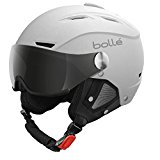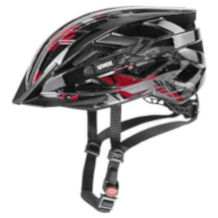Bike helmet purchasing advice: how to choose the right product
- What you need to know
- While they aren’t mandatory for cyclists, helmets are the best way to prevent head injuries and fatal accidents on the road.
- There are many different types of helmets for different settings such as city riding, racing, and mountain biking.
- Helmets need to fit properly to provide the best safety.
- Choosing the correct helmet depends on factors such as build quality, safety, and comfort.
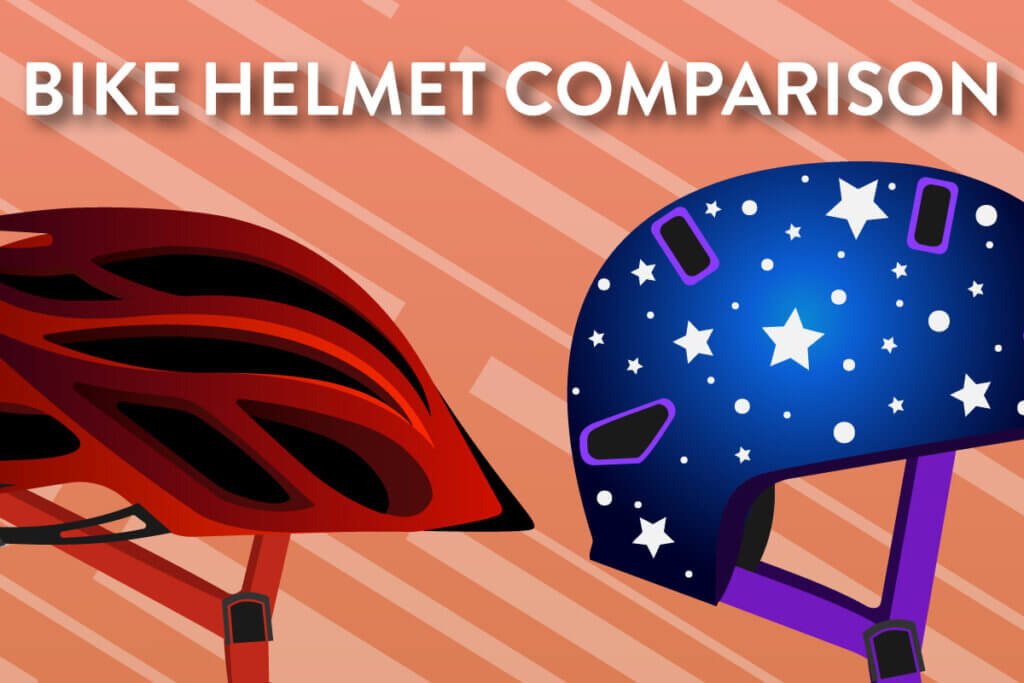
Life savers or useless accessories?
Bike accidents happen all the time. In the UK for example, in 2019, 16,884 people were officially registered as having been injured in cycling accidents. Some of these accidents led to irreversible damage and, in the most tragic cases, death. Traffic experts and medical professionals advise cyclists to always wear a helmet. A helmet doesn’t just protect against skull fractures and cuts, it can save your life. Of course, helmets alone cannot totally prevent injury. They do, however, significantly reduce the risk of brain damage and skull fractures.
Many people and action groups are attempting to enforce compulsory helmet wearing for cyclists. The worry for the authorities is that such a requirement would have a negative effect on cycling participation. There have been historical patterns of public outcry before the introduction of new safety regulations. This was the case when wearing seat belts and ski helmets was made mandatory. Naturally, traffic conditions and road type play a significant role in cycling safety. This doesn’t mean, however, that cyclists should be exempted from wearing a helmet.
It is advised that children and active cyclists always wear a helmet—be it on a mountain bike, a racing bike, or a BMX. By doing this, adults both protect themselves from head injuries and provide a good example for onlooking children. This risk of getting into an accident as an adult is barely lower than that of a child. In fact, experienced riders often take more risks. Just because you are wearing a helmet doesn’t give you jurisdiction to break other rules like riding too fast. Showing consideration for other road users is crucial.

Some people see helmets simply as an ugly annoyance that messes up their hairstyle. This is, of course, a matter of opinion. Nevertheless, vanity should never take precedence over safety. Some critics look to a study from 2007 which claims that helmet wearers are more likely to get into an accident than those who don’t. The theory behind the study is that cyclists and car drivers take less care when a cyclist is wearing a helmet. Regardless of this theory, for the best protection, it is important to choose the correct kind of helmet as accidents can happen either way. High-quality helmets are robust and fit to the shape of your head.
Arguments for and against helmets
Although vanity is a difficult obstacle to overcome for some people, safety should always be your top priority. The various advantages and disadvantages of wearing a helmet are illustrated in the following table:
Advantages
- Head protection in the event of accidents
- Available for all ages and genders
- Designs for every taste
- Individually adjustable
- Long lasting
- Relatively inexpensive
Disadvantages
- Extra weight to carry on your head
- Large differences between manufacturers
A helmet for all occasions
Helmets absorb the energy of an impact and dissipate it through their structure to protect your head. To do this, they are made of hard foam, otherwise known as EPS (expanding polystyrene).
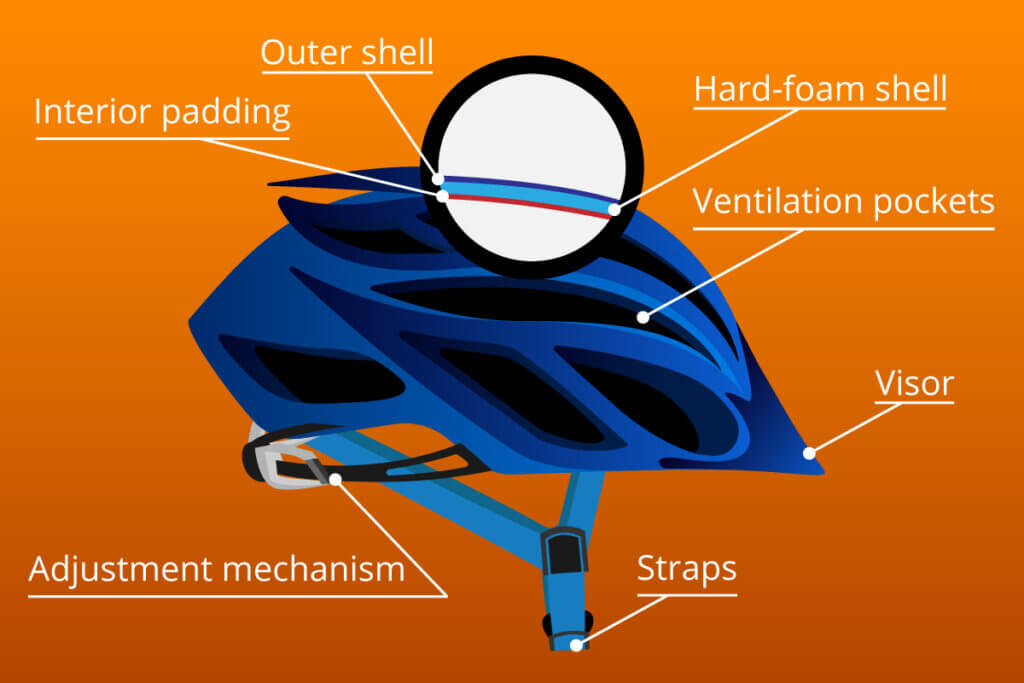
A stable, plastic shell is needed to protect the more sensitive inner foam. In the best helmets, the interior hard foam is injected directly inside the exterior shell. Helmets that are just glued together are of a lower quality. The resistant hard outer shell is made from ABS which prevents sharp objects from penetrating the helmet. It also helps to minimise any scrapes that can occur from contact with asphalt.
While expensive hard-shell models are made using injection moulding to provide optimised protection, soft-shell models also provide good protection — just not to the same level. Soft-shell helmets only have one layer of hard foam. In comparison to hard-shell models, they are significantly lighter, but more difficult to clean. Top-end helmets have a carbon shell. Carbon fibre composite can withstand a lot of force, despite being extremely lightweight.
Injection moulding
Injection moulding is a common manufacturing technique for many types of sport helmet. The shell and hard foam are melted together under high pressure and high temperature, creating a completely enclosed and connected helmet structure. This type of helmet provides much more protection than a simpler, glued model. Injection moulded helmets are also lighter and longer lasting.
MIPS
MIPS (Multi-Directional Impact Protection System) is an innovative helmet technology designed to protect against indirect head impacts. Normal helmets absorb impact statically without any head rotation. MIPS helmets on the other hand, reduce the turning and rotationary forces exerted on your head during an accident.
To achieve this, the exterior of the helmet can move independently of the interior. This means that the rotational forces exerted on your head by a sideways fall are reduced. The system is designed using the same safety principles found in our brains, which can move independently within our skulls. This allows for impacts to be better absorbed in the event of an accident.
Different types of bike helmets
Everyone’s requirements for a bike helmet are slightly different. Someone may be looking for something rounded which covers the back and sides of the head. Someone else, meanwhile, may be looking for a sporty helmet with air pockets and an aerodynamic form. Depending on their intended uses, bike helmets can differ enormously.
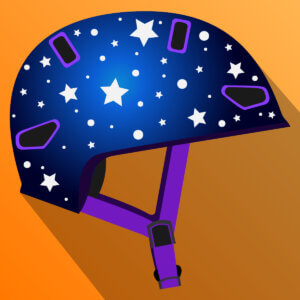
Children’s helmets
Children’s helmets are available in different colourful designs. Some models have particularly eye-catching shapes, with an umbrella-like front and deep-set, flattened rear. They have lots of ventilation pockets, allowing for air to circulate freely. Despite these air pockets, these helmet remain extremely safe. Most models can be adjusted via a chin strap. They are child-friendly and can even come with integrated lights.
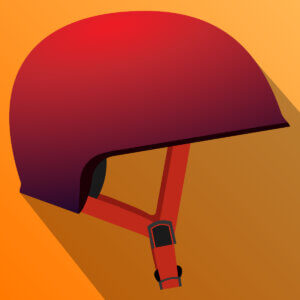
City helmets
City helmets have a deeply set rear and a subtle brow. This type of helmet encases more of your head and doesn’t have many air vents. They are particularly popular with BMX cyclists and commuters because of their cool design.
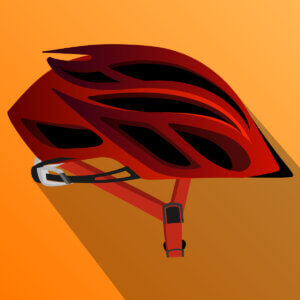
All-rounder touring helmets
These models are particularly light, have a lot of ventilation holes, and an extended brow at the front which protects from sun and rain. They often come with a light at the back, as well as a detachable visor. These helmets are suited to everyday cyclists who want to be prepared for all eventualities.
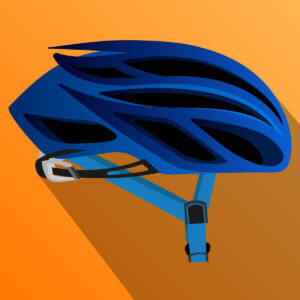
Racing helmets
Particularly light and well ventilated, racing helmets are instantly recognisable thanks to their their flattened brows. Weighing between 7 and 10 ounces (200-300g), their light aerodynamic designs mean they are comfortable even on long journeys. Extra protection is provided by both the outer material and carbon interior structure.
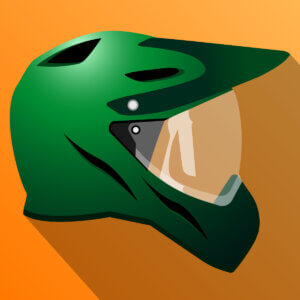
Mountain bike helmets
Although mountain bike helmets tend to be a little larger and bulkier, they are usually no heavier than conventional helmets. Enduro style MTB helmets, for example, are usually made using a half shell. They are light, well ventilated and come with a detachable visor. Mountain bike helmets are suitable for all terrain cycling.

Downhill helmets
These light, yet robust, hard-shell helmets fully enclose your chin, neck, and head. Instead of having a visor, they come with protective goggles. They provide a complete protection for your entire head and neck, much like motorcycle helmets.
Innovative helmets
Inventions like the Hairport from Specialized provide options to combat the limitations of a conventional helmet. Hairports let you put a braid or ponytail comfortably through the back of a helmet without it obstructing your vision. Detachable visors are another useful innovation. They remove the need for wearing sunglasses. If you wear glasses, it’s a good idea to buy special cycling glasses which prevent your helmet from uncomfortably squeezing the sides of the head. New and innovative designs are constantly appearing on the market. Helmets with a built-in airbag are a great example of this. They have a sensor that recognizes you are falling which then releases the airbag around your head.
Size matters
A helmet will only work properly if it fits correctly. When choosing a helmet, the fit should your number one priority. The interior padding and chinstrap play an important role in determining how a helmet fits on your head. If your helmet doesn’t fit, there is a high chance that it will slip off during a crash. A helmet shouldn’t sit too angled towards the back of your neck, nor should it be perched forwards on your brow blocking your sight. The adjustable plastic ring on the interior of a helmet is essential for achieving a perfect fit, keeping the helmet on tightly without it wobbling.
Most helmets are adjustable – up to 2 inches (5cm) – via an adjustment wheel on the back. While this is a useful feature, the helmet you go for should fit well without much need for adjustment. If the interior padding is too tight on your head, it can lead to irritation or discomfort. If the helmet is too large, you can buy extra interior padding to fill the empty space. Chin straps are another important feature for ensuring the perfect fit. The straps are sitting correctly on your head if they form a V-shape either side of your ears and fasten under your chin. Holding clips, meanwhile, mean that the straps stay at the correct length.
Helmet chin straps should be tight to the chin without causing discomfort. There should be room between your chin and the chin strap for a finger or two. This means you will still be able to breathe in the event of an accident. Don’t cut the strap down with scissors if it is too long, as you may require more room for wearing a helmet over a hat in winter. Depending on the helmet, the clasp on a chin strap is usually either magnetic or a click fastening. This is because with long-distance cycling or racing, it is important to be able to open the clasp with one hand while you are cycling.
Size
Each head is different and, accordingly, bike helmets come in different sizes. Just like with hats, sizes are measured from XXS to XXL. The best way to measure your head is to use a tape measure around your forehead. The longer the length, the larger a helmet you’ll need. The following table provides a size guide.
- XS: 20-21⅕ inches (51-54cm)
- S: 21⅝-22 inches (55-56cm)
- M: 22⅖-22⅘ inches (57-58cm)
- L: 23⅕-23⅝ inches (59-60cm)
- XL: 24-24⅖ inches (61-62cm)
- XXL: 24⅖-25⅕ inches (62-64cm)
Due to the fact that sizes differ greatly between manufacturers, you should check the measurements every time you buy a new helmet. Most importantly, there should be no room on the top of your head for the helmet to become loose.
Safety standards
To be used in Europe, helmets must undergo testing stipulated by the GPSR (General Product Safety Regulations). This test is known as EN 1078. This has been adopted by the British Standards Institution (BSI), together with a further test for children’s bike helmets. The tests check whether the materials stand the test of crash simulations. In the USA, there are similar regulations under the Consumer Product Safety Act, published in the Code of Federal Regulations in Title 16, Part 1203.
Buying tips
Along with size and fit, there are a few more things that you should consider when buying a new helmet. Of course, added extras come at a higher price. The following four criteria are crucial though, irrespective of cost:
- Safety: helmets don’t just need to have sufficient cushioning; you also need to consider how easy they are to take off and whether they have integrated lights.
- Build quality: it is essential that your helmet doesn’t deteriorate when exposed to high or low temperatures.
- Comfort: a helmet should be light, well ventilated, and not scratchy.
- Harmful substances: make sure that your helmet isn’t made with any harmful materials such as plastic softeners.
Extras: ventilation and reflectors
It’s true that, after a little while, every extra bit of weight on your head can weigh you down. In most cases, helmets are not at all heavy — the heaviest you’ll find weigh no more than 2 pounds (1kg). If you don’t want a sweaty head during long rides, go for a helmet with vents. This way, air can flow through the front of the helmet and out of the back, helping to prevent heat from building up. Most ventilation pockets are equipped with insect netting to keep out any unwanted critters. If it is raining, a protective waterproof cover helps to keep water from entering through the holes.
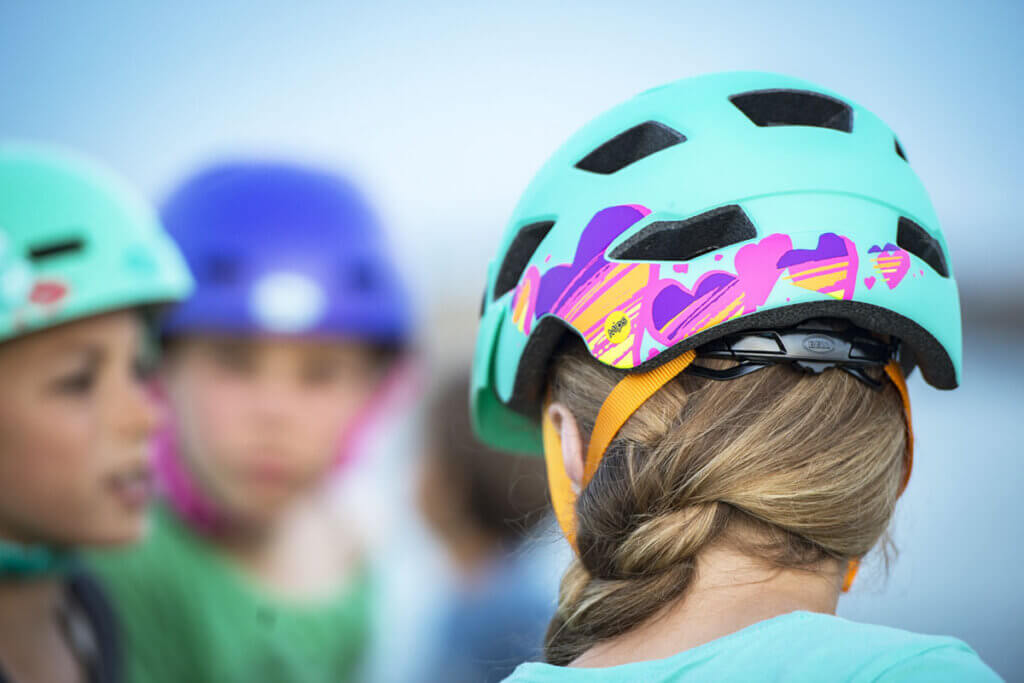
Reflectors can also be added to both sides of the helmet. These can either be reflective strips or reflective stickers. If applied correctly, these help a cyclist to be better seen by other road users at night. Some cyclists choose to wear a red LED light on the rear of the helmet.
A retractable visor can protect you from drafts of wind as well as bright light, rain, snow, and insects. This means you won’t need to wear sunglasses. At the same time, there should be enough room for normal glasses to be worn underneath the visor. Colourful tints can be bought with a prescription. You can also choose between mirrored and clear models. Some models automatically deploy the visor depending on the weather conditions.
Bike helmets come in different colours and designs, ranging from classic monochrome to versions with animal ears or Star Wars graphics. Black helmets aren’t the best option because they are more difficult to see in the dark and can become extremely warm in summer.
A helmet for life?
Bike helmets are subjected to a constant assault from the weather. The damaging effects of sun, wind, and rain will eventually cause you to need a new helmet. This is because the thermoplastics used in their manufacture — ABS and EPS — both deteriorate under certain weather conditions and naturally lose some of their properties over time. Most manufacturers recommend, therefore, that a bike helmet be changed every three to five years. It is very difficult to make sweeping statements about the durability of the diverse range of products available on the market. At the very least, a helmet should be replaced after an accident, even if there is no damage visible. Even the smallest of cracks – even ones that may be imperceptible to the human eye – can affect the overall durability and protective capabilities of a helmet.
Safety for kids
Lots of parents love to take their kids with them on their bikes. It is always advised that children wear a helmet, even if they themselves are not riding the bike. This is the only way to effectively protect a child from accidents. Kids are often not quick enough to react to danger, but a helmet can help to prevent any serious damage from occurring.
Regarding storage, it’s important not to keep your helmet in a damp room. This is because the material can deform. A helmet can no longer be used once the EPS foam has become crumbly or the inner shell has separated from the outer. One of the main causes of this kind of damage is exposure to UV light. For this reason, bike helmets should not be stored in direct sunlight, nor in warm car boots, nor next to a radiator. Ideally, a bike helmet should be stored somewhere cool, dark, and dry. Kids helmets need to be changed significantly more frequently, partly because children grow quickly and partly because they fall more often during the learning phase.
Care and maintenance
During a cycling trip, loads of different kinds of dirt like rain, mud, or even insects can end up on your helmet. It should be noted, however, that not all cleaning detergents are suitable for cleaning a helmet. Strong cleaning products, oils and solvents are not suitable for this task, as they contain benzene, acetate, and chlorine, all of which can destroy the plastic and make your helmet porous. Lukewarm water and washing up liquid is enough to clean the surface of your helmet without negatively affecting the material below. If the dirt is really caked-on, you can scrub a little harder with a sponge or similar device. You must, however, be more careful with the interior. Cleaning between the air vents is best done with a damp cloth. This can also be used to clean the straps.
Dirt from the street is not the only type of dirt which can affect the interior of a bike helmet. Sweat, hair particles, and other hair products also leave their mark, meaning that the interior padding needs to be cleaned regularly. Oftentimes, helmets have Velcro fastenings for their internal pads, which are then easy to remove and clean. For hygiene reasons, it’s recommended that you occasionally wash these parts of the helmet in the washing machine on a short-wash setting at 30°C. High-temperature settings are just as damaging as a spin in the tumble dryer. Under no circumstances should you dry your helmet in the sun. When reassembling the interior padding, pay attention to returning everything to its original position.
Image 1: © FinalCheck | Image 2: © Ermolaev Alexadr / stock.adobe.com | Images 3-10: © FinalCheck | Image 11: © sanchez / stock.adobe.com

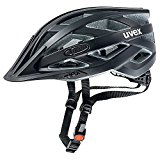
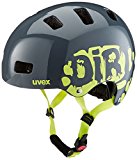
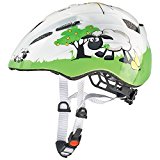
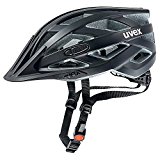
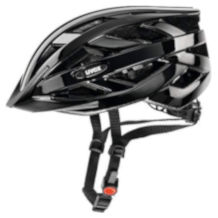
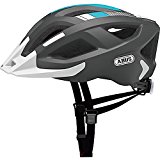
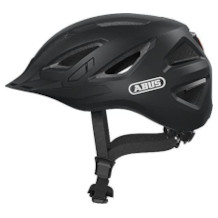
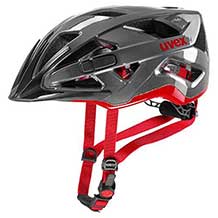
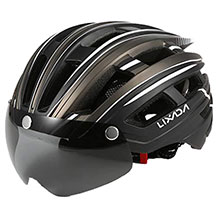
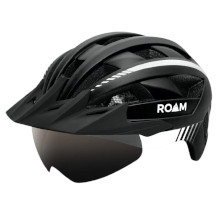
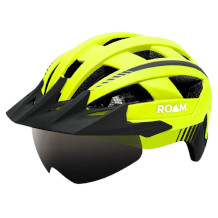
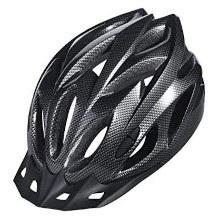
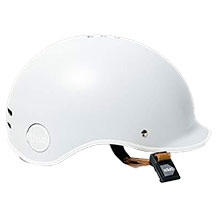
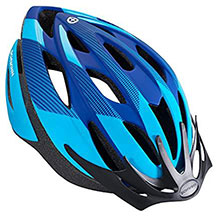

 4,596 reviews
4,596 reviews

